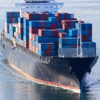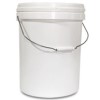| Aadhunik Industries is manufacturers of Potassium Sulfate or Potassium Sulphate FCC Food Grade BP Ph Eur Reagent, Pharmaceutical Excipients in India. We offer Halal and Kosher Potassium Monopersulfate or Potassium Monopersulfate or Potassium peroxymonosulfate made in an ISO9001, ISO22000 (FSSC22000). We observe good manufacturing practice and good laboratory practice. |
| The units have one or more of the certifications like FDA GMP, ISO 9001, ISO 22000, HACCP, REACH, Kosher & Halal |




Potassium Sulfate or Potassium Sulphate SDS MSDS of Suppliers Manufacturers
CAS Number: 7778-80-5
Potassium Sulfate
Potassium Sulphate or Potassium Sulfate SDS, Safety Data Sheet
MSDS, Material Safety Data Sheet
1. PRODUCT DESCRIPTION
Product Name & Other Names: Potassium Sulfate or Potassium Sulphate.
CAS Number: 7778-80-5
EINECS EC Number: 231-915-5
Molecular Formula: K2SO4
Molecular Weight: 174.26
Relevant uses and uses advised against (if any): Industrial Manufacturing.
2. HAZARD IDENTIFICATION
GHS, Globally Harmonized System Classification in accordance with 29 CFR 1910
Hazard Class and Category Code(s), Regulation (EC) No 1272/2008 (CLP)
Not a hazardous substance or mixture according to Regulation (EC) No. 1272/2008.
This substance is not classified as dangerous according to Directive 67/548/EEC.
Labeling as per GHS & Regulation EC 1272/2008 (CLP) & GHS
GHS Label Elements None |
Signal Words: None
Precautionary statements:
P261: Avoid breathing dust/fume/gas/mist/vapors/spray.
P262: Do not get in eyes, on skin, or on clothing.
P281: Use personal protective equipment as required.
P302+P352 - IF ON SKIN: Wash with plenty of soap and water.
P304 + P340 - IF INHALED: Remove victim to fresh air and keep at rest in a position comfortable for breathing.
P305 + P351 + P338 - IF IN EYES: Rinse cautiously with water for several minutes. Remove contact lenses, if present and easy to do. Continue rinsing.
P337+313: If eye irritation persists get medical advice/attention.
3. COMPOSITION/INFORMATION ON INGREDIENTS
Product Name & Other Names: Potassium Sulfate or Potassium Sulphate.
CAS Number: 7778-80-5
EINECS EC Number: 231-915-5
4. FIRST AID MEASURES
Always get medical attention after the first aid is over.
Eyes - Flush with water for at least 15 minutes, raising and lowering eyelids occasionally. Get medical attention if irritation persists.
Skin - Thoroughly wash exposed area for at least 15 minutes. Remove contaminated clothing. Launder contaminated clothing before reuse. Get medical attention if irritation persists.
Ingestion - If Potassium Sulfate is swallowed, if conscious, give plenty of water. Immediately call a physician. Never give anything by mouth to an unconscious person.
Inhalation - Remove to fresh air. Give oxygen if breathing is difficult; give artificial respiration if breathing has stopped. Get medical attention.
5. FIREFIGHTING PROCEDURES
Extinguisher Media: Use media suitable to extinguish surrounding fire. Oxides of Sulfur and Potassium may arise on decomposition.
Flammable Limits in Air % by Volume: N/A
Special Information: In the event of a fire, wear full protective clothing and NIOSH-approved self-contained breathing apparatus with full face piece operated in the pressure demand or other positive pressure mode. At high temperatures under fire conditions, it may produce toxic or irritating fumes. Fire-extinguishing work is done from the windward and the suitable fire-extinguishing method according to the surrounding situation is used.
6. SPILL OR LEAK PROCEDURES
Personal precautions, protective equipment, and emergency procedures: Avoid breathing dust/fumes/gas/mist/vapors/spray. Use individual protective equipment (waterproof boots, suitable protective clothing, safety glasses, etc.). Restrict unprotected personnel from the area. Prevent any contact with hot surfaces. Do not approach facing the wind. Do not touch the spilled material.
Environmental precautions: Do not let the product enter drains, soil, or water sources.
Methods and materials used for containment Cleanup procedures and Storage: Contain spilled material. Do not let the product enter drains. Use a shovel to put the material into a convenient waste disposal container.
7. SPECIAL PRECAUTIONS
Precautions for safe handling: Apply according to good manufacturing and industrial hygiene practices. Ensure proper ventilation. In case of insufficient ventilation, wear suitable respiratory equipment. Wash thoroughly after handling. Do not drink, eat, or smoke while handling. Avoid contact with skin, eyes, and clothing. Minimize dust generation. Avoid breathing dust/fumes/gas/mist/vapors/spray. Keep container tightly closed. Avoid ingestion and inhalation. Use individual protective equipment (waterproof boots, suitable protective clothing, safety glasses, etc.). Prevent any contact with hot surfaces.
Conditions for safe storage, including any incompatibilities: Store in cool, dry, and ventilated area away from heat sources and protected from sunlight in tightly closed original container. Keep air contact to a minimum. Store protected from heat, sparks and ignition sources and incompatible materials. Do not store with incompatible materials like strong oxidizing agents and strong acids.
8. SPECIAL PROTECTION INFORMATION
Respiratory Protection (Specify Type): None needed under normal conditions of use with adequate ventilation.
Ventilation System: A system of local and/or general exhaust is recommended to keep employee exposures as low as possible. Local exhaust ventilation is generally preferred because it can control the emissions of the contaminant at its source.
Personal Respirators (NIOSH Approved): For conditions of use where exposure to dust or mist is apparent and engineering controls are not feasible, a particulate respirator may be worn.
Skin Protection: Wear protective gloves and clean body-covering clothing.
Eye Protection: Use chemical safety goggles and/or full face shield where dusting or splashing of solutions is possible. Maintain eye wash fountain and quick-drench facilities in work area.
Other Control Measures: Maintain good housekeeping in work area. Dust deposits on floors and other surfaces may pick up moisture and cause the surfaces to become slippery and present safety hazards.
9. PHYSICAL DATA
Appearance and Odor: White crystalline powder or granules.
Odor: Odorless.
Odor threshold: Not available.
pH: 4.5 to 8.5
Relative density: around 2.7
Melting Point: 1067C.
Boiling Point: 1689C
Flash point: No data found.
Auto-ignition temperature: No data found.
Decomposition temperature: No data found.
Upper/lower flammability or explosive limits: No data found.
Vapor pressure: No data found.
Vapor density: No data found.
Evaporation rate: No data found.
Flammability (solid, gas): No data found.
Partition coefficient: n-octanol/water: No data found.
Solubility in Water: Soluble in water. >100 g/l at 25 °C
Viscosity: No data found.
10. REACTIVITY DATA
Stability: Stable under ordinary conditions of use and storage.
Conditions to Avoid: Heat, humidity
Incompatibility (Materials to Avoid): Strong oxidizing agents, Strong acids.
Hazardous Decomposition Products: Sulfur & Potassium oxide
Hazardous Polymerization: Will not occur.
11. TOXICITY DATA
Toxicity Data: LD50 Oral - Rat - 6.600 mg/kg
Carcinogenicity: No component of this product present at levels greater than or equal to 0.1% is identified as probable, possible or confirmed human carcinogen by IARC, NTP, ACGIH & OSHA.
Reproductive toxicity: No data found.
Teratogenicity: No data found.
Mutagenicity: No data found.
12. ECOLOGICAL DATA
Toxicity to fish:
LC50 - Pimephales promelas (fathead minnow) - 680 mg/l - 96 h
Acute LC50 <680000 ug/L Fresh water Daphnia - Ceriodaphnia dubia - <24 hours Exposure 48 hours.
Acute LC50 680000 ug/L Fresh water Fish - Pimephales promelas - 1 to 7 days Exposure 96 hours
Toxicity to daphnia and other aquatic invertebrates: EC50 - Daphnia - 630 mg/l
Persistence and Degradability: Unlikely to persist due to water solubility.
Mobility: Likely to be mobile due to water solubility.
Bioaccumulative potential: Does not bioaccumulate.
Results of PBT and vPvB assessment: This substance/mixture contains no components considered to be either persistent, bioaccumulative and toxic (PBT), or very persistent and very bioaccumulative (vPvB) at levels of 0.1% or higher.
13. DISPOSAL INFORMATION
Waste Disposal Methods: Dispose Potassium Sulfate in accordance with all applicable Federal, State and Local regulations.
14. TRANSPORT INFORMATION
DOT USA, TDG Canada & ADR/RID Europe: Not dangerous goods.
IMDG/IMO: Not dangerous goods.
IATA/ICAO: Not dangerous goods.
15. REGULATORY INFORMATION
USA:
California Prop. 65 Components: This product does not contain any chemicals known to State of California to cause cancer, birth defects, or any other reproductive harm.
Disclaimer:
*****************************
Our company provides this MSDS sheet in good faith but makes no representation as to its comprehensiveness or accuracy. This SDS sheet is intended only as a guide to the appropriate precautionary handling of the material by a properly trained person using this product. Individuals receiving the information must exercise their independent judgment and do further search in determining its appropriateness for a particular purpose. In no case shall our company be liable to loss or damages by the product user.
*****************************
Potassium Sulfate or Potassium Sulphate FCC Food Grade BP Ph Eur Reagent Manufacturers:
Aadhunik Industries
S-8, SARIFA MANSION, 2ND PRINCIPAL S H MARG, MUMBAI 400009, INDIA
TEL: (OFFICE) 91-22-23770100, 23726950, 23774610, 23723564. FAX: 91-22-23728264
e-mail: anmolc@mtnl.net.in
Exports to USA, Canada, UAE, Dubai, South Africa, Tanzania, Kenya, Nigeria, Egypt, Uganda, Turkey, Mexico, Brazil, Chile, Argentina, Europe Netherlands, Italy, Spain, Germany, Portugal, France, Malaysia, Indonesia, Thailand, Korea, Japan,etc.
It is nice to be important
But it is more important to be nice.